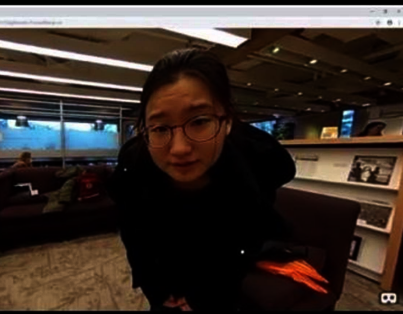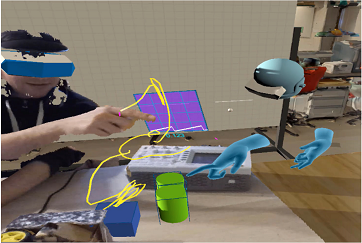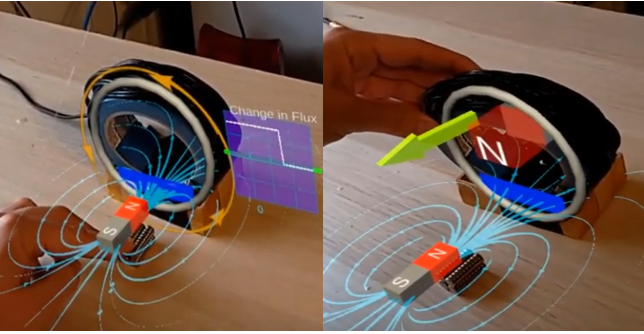|
Creating Empathy, Revealing Biases, and Altering Mindsets Towards Childhood Literacy using Immersive Technologies |
|||
|
Purpose: Research UX Researcher
Topics: virtual reality 360 video empathy education bias |
|
Challenges in childhood literacy are a significant barrier to education and quality of life. These two projects were part of an ongoing program of research aimed at using immersive technologies to identify what barriers are preventing adults from effectively building childhood early literacy, and subsequently to design experiences that can mitigate those factors. One barrier is the lack of empathy: adults (parents, teachers, and other caregivers) who have high literacy often forget what it's like to be a child, and cannot relate to the experience of a struggling reader. Another barrier is biases: research suggests that the socioeconomic status (SES) of students plays a role in teacher perceptions. In one project we used narrative-based 360-video VR to build empathy in adults for the children in their lives. We built a VR experience to induce emotions related to empathy, then studied its effects on caregiver participants who were parents and teachers, resulting in understanding how people are emotionally moved by VR experiences, and identifying design features that raise user empathy. In another project we used the Mursion system to simulate a virtual classroom, and evaluate how teachers exhibited biased judgements when shown students from varying SES backgrounds. We found most teachers mainly thought they are unbiased, but they significantly judged low SES students as making more progress than high SES students; furthermore, we found immersion was correlated with increased bias in teacher judgements. These approaches can be of particular value when teachers and caretakers must recognize that they have biases, as a necessary step in unlearning these by practicing unbiased strategies in simulated environments, with the aim of transfer to real world classrooms. Radu, I., Dede, C., Seyam, M. R., Feng, T., & Chung, M. (2021). Using 360-video virtual reality to influence caregiver emotions and behaviors for childhood literacy. International Journal of Gaming and Computer-Mediated Simulations (IJGCMS), 13(1), 12-33. (PDF)
Radu, I., Dede, C., Wang, J., Nie, G., Bhola, K., & Scuzzarella, M. (2022). Using Virtual Environments to Reveal Teacher Bias Towards Students’ Socioeconomic Status. In 2022 8th International Conference of the Immersive Learning Research Network (iLRN) (pp. 1-8). IEEE.
Radu, I. & Dede, C. (2019) Designing Immersive Experiences that
Create Empathy, Reveal Biases, Alter Mindsets. Serious Play 2019 Conference, Montreal. Media:
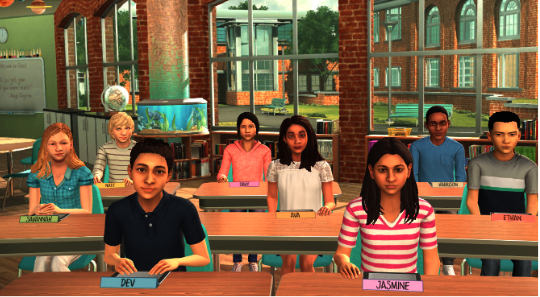 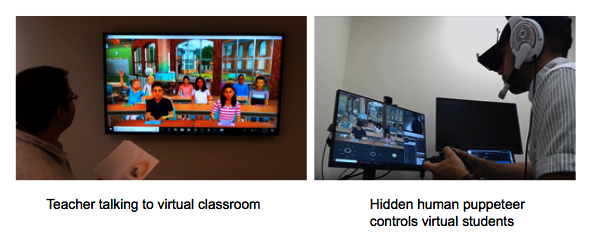 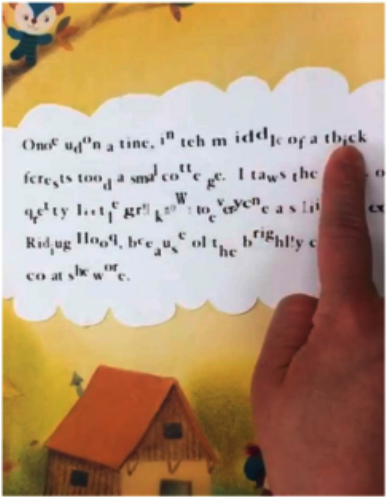 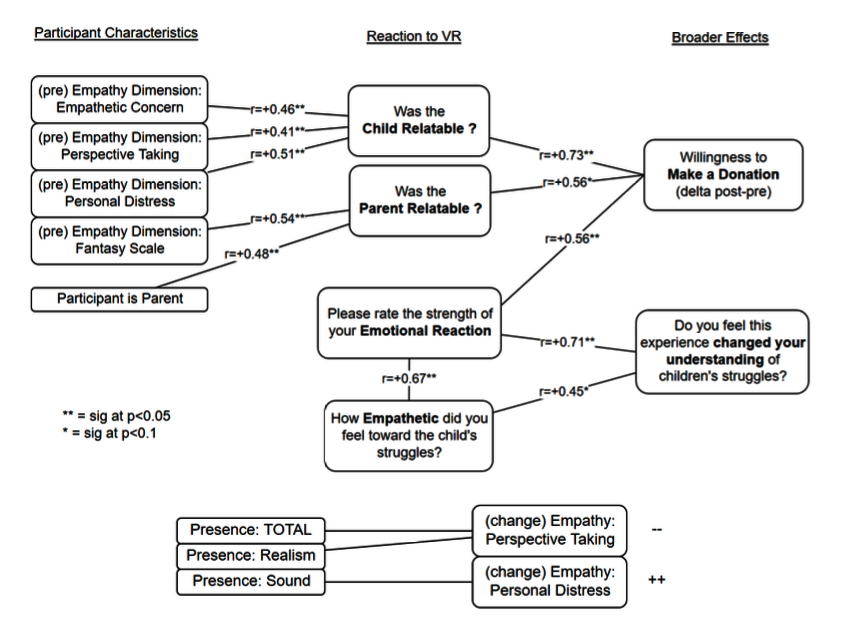 |
|
|
Remote Virtual Makerspaces: Merging AR/VR/MR to Enable Remote Collaborations in Physical Maker Activities |
|||
|
Purpose: Research Lead Software Developer
Development: Topics: augmented-reality virtual-reality 3D scanning electronics internet of things |
|
This research is an exploration of the future of maker spaces, where collaborators (colocated and remote) can discuss, explore, create and learn about 3D physical objects regardless of their physical locations. The system combines augmented reality (AR) headsets, 3D cameras, PC and virtual reality (VR) interfaces, into a virtual space that contains multiple remote students, instructors, physical and virtual objects. Remote students can see a real-time 3D scan of the on-site user's physical environment, and the virtual avatars of other students. The system can support learning and exploration by showing virtual overlays on real objects (ex: showing a physical robot's sensor data or internal circuitry) while responding to real-time manipulation of physical objects by the on-site user; and can support design activities by allowing remote and local participants to annotate physical objects with virtual drawings and virtual models. This platform is being developed as an open-source project, and we are currently building applications with the intention to deploy in hybrid makerspace classrooms involving on-site and remote students. Short Video Long Video
Radu, I., Joy, T., & Schneider, B. (2021, May). Virtual makerspaces: merging AR/VR/MR to enable remote collaborations in physical maker activities. In Extended Abstracts of the 2021 CHI Conference on Human Factors in Computing Systems (pp. 1-5). [ACM LINK]
|
|
|
Holographic Tools for Physics Instructors |
|||
|
Purpose: Research Lead Software Developer, Lead UX Researcher
Development: Topics: augmented-reality electronics internet of things |
|
In this study we investigate the use of AR in remote 1-1 tutoring scenarios, which can be more accessible and affordable to educational institutions since AR devices would not be required for every student. We investigate the context where an instructor is using an AR headset while manipulating physical objects, while working with a student who views the instructor’s view remotely through a computer screen. We envision this context will become popular with educators because it can reduce multiple limitations: personal AR devices for students would not be required, instructors would be able to illustrate learning content through carefully curated AR activities, and students would still be actively engaging in the investigation of the learning material without special knowledge of how to actively control the experience. We present a system for AR-based physics instruction, and perform a between-subjects study where an instructor uses the AR system while teaching electromagnetism physics to a remote student. We measure how the presence of AR visualizations impacts student learning outcomes and inquiry activities.
Radu, I., Huang, X., Kestin, G., & Schneider, B. (2023). How Augmented Reality Influences Student Learning and Inquiry Styles: A Study of 1-1 Physics Remote AR Tutoring. Computers & Education: X Reality
Radu, I., Huang, X., Kestin, G., Shah, Z., & Schneider, B. (2022). How Augmented Reality Transforms Learning and Inquiry Patterns in 1-1 Remote Tutoring. International Conference on Computer Supported Collaborative Learning (ISLS).
|
|
|
|
|
|
|
|
|
|
|
|
|
|
